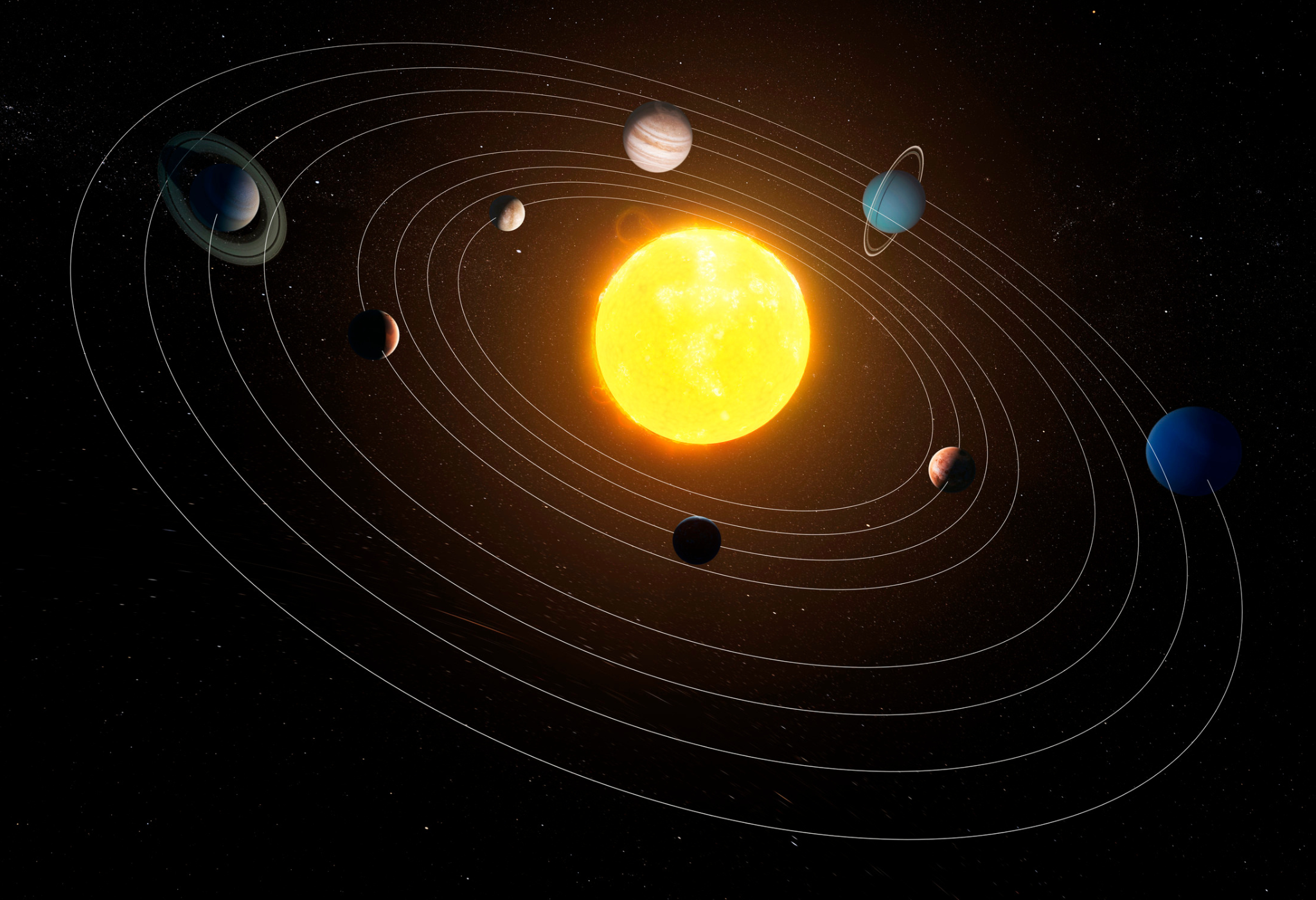Imagine you’re floating in space, looking at planets orbiting the Sun. At first, it might seem that planets just “go around” in some mysterious way. But Johannes Kepler, in the early 1600s, discovered simple rules that perfectly describe how planets move. These rules are called Kepler’s Laws, and they help us understand not only our Solar System but also distant stars and planets.
Let’s explore them together, step by step.
Why Kepler’s Laws matter
Before Kepler, people thought planets moved in perfect circles. Copernicus had already said the Sun was at the center, but the math didn’t match observations. Kepler looked at years of data from Tycho Brahe, and found patterns.
Kepler’s Laws tell us:
- The shape of planetary orbits
- How fast planets move at different points in orbit
- How orbit size relates to the planet’s year
If you understand these, you can:
- Predict where a planet will be in the sky
- Understand satellites and space missions
- Grasp the basics of orbital mechanics — essential for astronomy
Kepler’s First Law — Law of Ellipses
Statement:
“Planets orbit the Sun in ellipses, with the Sun at one focus.”
What does that mean?
An ellipse is like a stretched circle. Imagine a circle squeezed sideways — that’s an ellipse.
- An ellipse has two foci. The Sun sits at one, and the other is empty space.
- Planets are not moving in perfect circles; their distance to the Sun changes as they orbit.
Math / Visuals:
If r is the distance from the planet to the Sun, a is the semi-major axis (longest radius), and e is the eccentricity (how stretched the orbit is, between 0 and 1), the orbit can be described by: r(θ)=a(1−e2)1+ecosθr(\theta) = \frac{a (1 – e^2)}{1 + e \cos\theta}r(θ)=1+ecosθa(1−e2)
Where θ is the angle from closest approach (perihelion).
Peer analogy:
Think of a racetrack that’s slightly oval. The Sun is at one end, not the center. When the planet runs, it’s sometimes closer and sometimes farther — just like a runner on the track.
Kepler’s Second Law — Law of Equal Areas
Statement:
“A line connecting the planet and the Sun sweeps equal areas in equal times.”
What does that mean?
Planets don’t move at constant speed! They speed up when closer to the Sun and slow down when farther away.
- Imagine drawing a line from the planet to the Sun as it moves. Over one month, the area that line sweeps out is the same, no matter which part of the orbit you pick.
Math / Visuals:
If the area swept in a small time Δt is ΔA, then: dAdt=constant\frac{dA}{dt} = \text{constant}dtdA=constant
Where dA/dt is the rate of area swept per unit time.
Peer analogy:
It’s like twirling a yo-yo around your finger on a string. When the yo-yo is closer to your hand, it moves faster; when it’s farther, it slows down — but the area swept per second remains constant.
Kepler’s Third Law — Harmonic Law
Statement:
“The square of a planet’s orbital period is proportional to the cube of the semi-major axis of its orbit.”
What does that mean?
- Big orbits → long years
- Small orbits → short years
Math:
If T is the orbital period and a is the semi-major axis: T2∝a3T^2 \propto a^3T2∝a3
Or, using units with the Sun’s mass and gravitational constant: T2=4π2GM⊙a3T^2 = \frac{4 \pi^2}{G M_\odot} a^3T2=GM⊙4π2a3
Where G = gravitational constant, M_⊙ = Sun’s mass.
Peer analogy:
Think of planets like kids on different-sized merry-go-rounds. The bigger the ride, the longer it takes to go around once.
How these laws connect
- First Law → tells us shape
- Second Law → tells us speed along that shape
- Third Law → tells us how orbit size relates to orbital period
Together, they fully describe planetary motion in a gravitational system. Modern physics later showed that Newton’s Law of Gravitation explains why these laws work. But Kepler discovered them empirically, just from observing the planets.
Fun applications
- Satellite orbits: Engineers use these laws to design geostationary satellites.
- Exoplanets: Astronomers calculate distant planets’ orbits using Kepler’s Third Law.
- Solar System predictions: We can predict planetary positions decades or centuries into the future.
Example Calculation:
If Earth’s semi-major axis a = 1 AU → orbital period T = 1 year (by definition).
For Mars, a ≈ 1.524 AU → T2=a3 ⟹ T2=(1.524)3≈3.54T^2 = a^3 \implies T^2 = (1.524)^3 \approx 3.54T2=a3⟹T2=(1.524)3≈3.54 T≈3.54≈1.88 yearsT \approx \sqrt{3.54} \approx 1.88 \text{ years}T≈3.54≈1.88 years
So Mars takes about 1.88 Earth years to orbit the Sun.
Key takeaways
Planet orbits are ellipses, not perfect circles.
Planets move faster when closer to the Sun, slower when farther.
The size of the orbit determines the length of the year.
These rules are universal — they work for moons, satellites, and exoplanets.
Now Imagine teaching this to a friend. Draw an ellipse, place the Sun at one focus, twirl a small ball along it — see how it speeds up and slows down. That’s Kepler in action!
Closing thought:
Kepler’s Laws remind us that nature often seems complicated at first, but simple patterns are hidden underneath. Once you see the laws, the motion of planets isn’t mysterious — it’s beautifully predictable.


